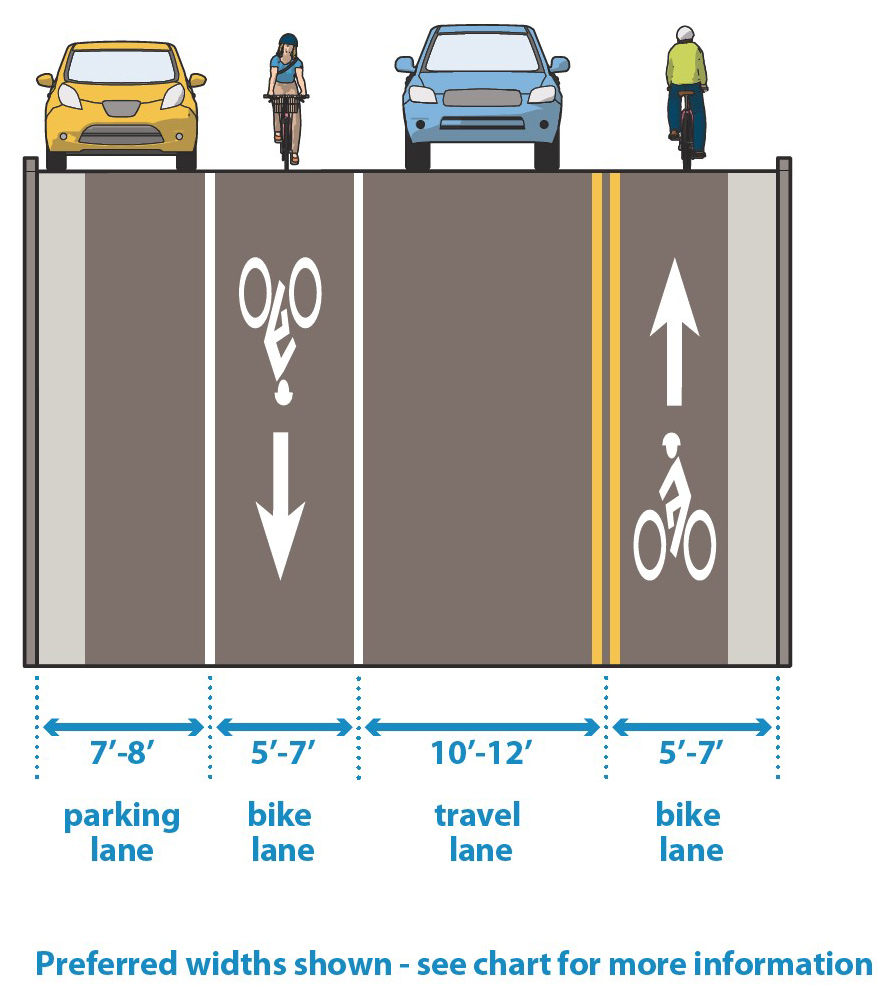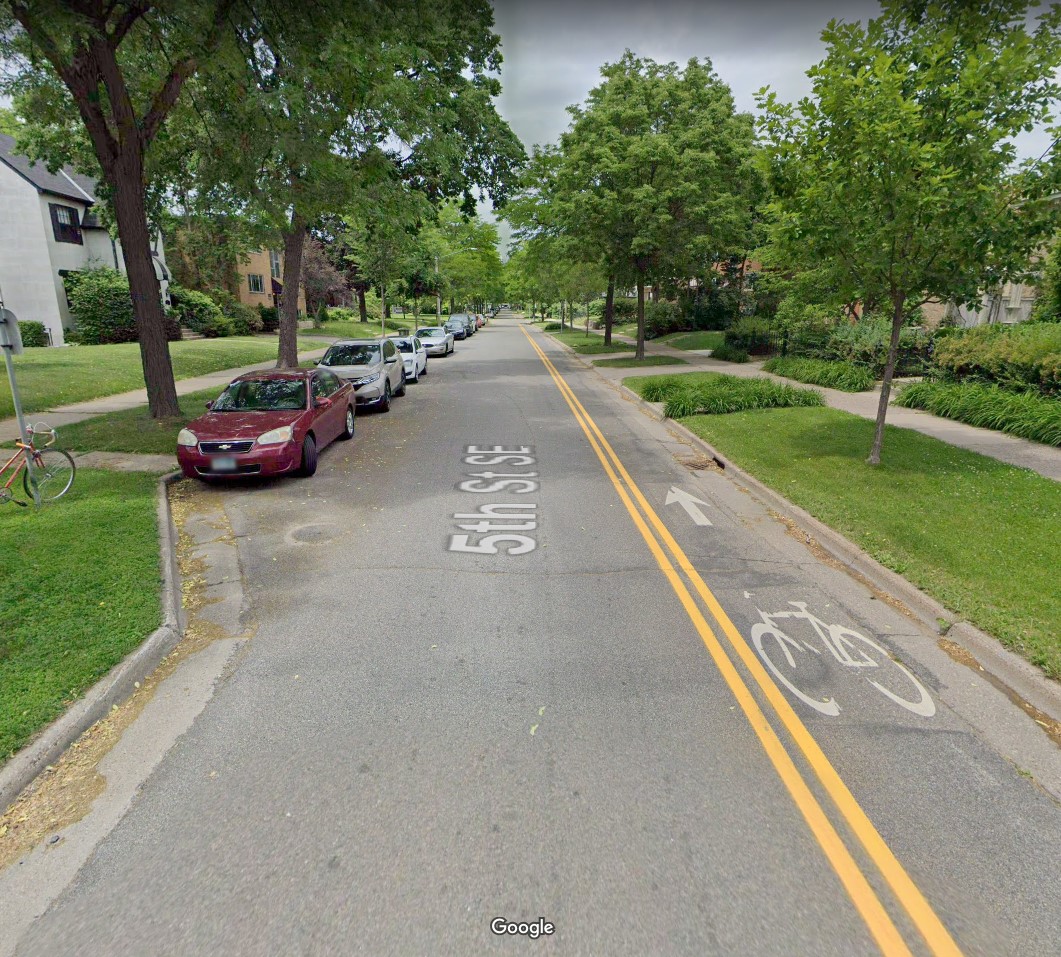3.4M Contraflow bike lanes
Search Content
Download PDF
Print Guide
Introduction
This treatment is best suited for low-speed, low volume roadways, unless physical protection is provided between the bikeway and adjacent travel lane. Contraflow bike lanes should be considered on corridors where there are few alternate routes that provide similarly convenient travel for people biking, narrow one-way neighborhood greenway streets, and on streets where existing contraflow riding is regularly observed.
Design Considerations
|
Striping |
|
|
Conditions for physical protection |
Contra-flow bike lanes should be physically protected when adjacent to streets with a posted speed limit above 25mph or high traffic volumes. See protected bike lane guidance for more details. |
|
Signage |
An “EXCEPT BIKES” plaque are typically posted beneath “DO NOT ENTER” signs (R5-1) or turn prohibition signs, if present, to permit two-way traffic use by bicycles at all street intersections. |
|
Parking. |
When a parking lane is located on the same side of the street as a contraflow bike lane, the parking lanes should be located between the bike lane and travel lane (sometimes referred to as “floating” parking). Floating parking should always be implemented with vertical delineation as a component of a protected bikeway. |





